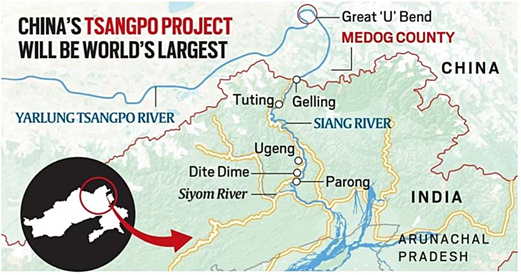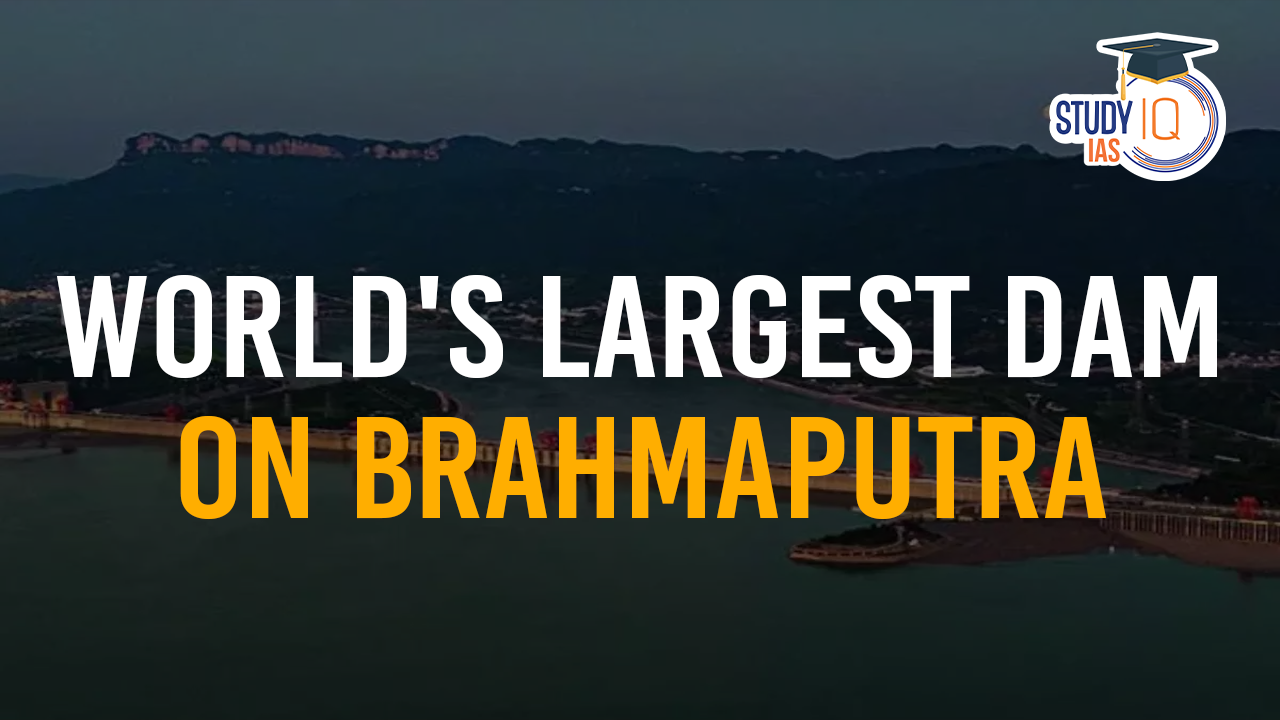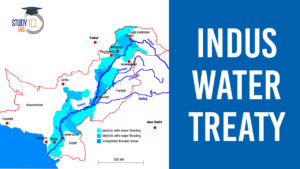Table of Contents
A massive dam is being constructed on the Brahmaputra River in Medog County, located in the Tibet Autonomous Region (TAR) of China. The dam is set to be the largest infrastructure project in the world, making headlines due to its scale, the potential impact on the region, and the strategic concerns it raises for neighbouring countries.
World’s Largest Dam on the Brahmaputra: Tsangpo Dam
- Location: The dam is being built at a massive gorge near the Indian border, where the Brahmaputra River makes a U-turn before entering Arunachal Pradesh in India. This strategic location places the project in proximity to key geopolitical zones.
- Size and Scale: Once completed, it will become the world’s largest dam, surpassing even China’s Three Gorges Dam, which is currently the largest hydroelectric project in the world.
- Power Generation: The dam is expected to generate an annual electricity output of 300 billion kWh, a significant amount of energy that could supply electricity to millions of homes and industries.
- Infrastructure: The project involves constructing enormous infrastructure, including a series of hydropower stations, floodgates, and water diversion systems, aimed at harnessing the Brahmaputra’s potential for energy generation.

Features of the Project
- Planned Capacity: 60,000 MW.
- 3 times the electricity generation of the Three Gorges Dam (currently the world’s largest hydro project).
- It will be the world’s biggest infrastructure project.
- Expected annual electricity generation: 300 billion kWh.
Yarlung Tsangpo River Path
- Originates in Tibet & Enters India in Arunachal Pradesh as Siang.
- Siang is joined by Dibang and Lohit in Assam; together they form the Brahmaputra.
- After India, it flows into Bangladesh and empties into the Bay of Bengal.
Strategic Concerns and Risks
While the project is being hailed as a monumental achievement for China’s energy goals, it has raised significant concerns in the downstream countries—particularly India and Bangladesh—due to its potential environmental, geopolitical, and security implications.
Downstream Implications
- Water Flow Control: Both India and Bangladesh have expressed concerns that the dam could give China the ability to control the water flow of the Brahmaputra, a vital river for agriculture, drinking water, and livelihoods in both countries.
- Flooding Risks: The dam’s ability to release floods during times of hostilities or political tensions could potentially devastate the downstream areas in India and Bangladesh, leading to serious humanitarian and economic consequences.
Seismic Risks
- The site of the dam lies on a tectonic plate boundary, making it prone to earthquakes and other seismic risks. This raises concerns about the dam’s safety, particularly in the event of a major seismic activity, which could lead to catastrophic flooding downstream.
Regional Tensions
- India’s Concern: India, in particular, is apprehensive about the project’s potential to disrupt the water supply to the Northeast states, especially Arunachal Pradesh, which shares its borders with China. The Brahmaputra is crucial for India’s agriculture, energy, and drinking water, and any disturbance to its flow could exacerbate regional tensions and ecological imbalances.
- Environmental Impact: The construction of such a massive dam could disrupt the local ecological balance, affecting fish migration, river biodiversity, and the surrounding ecosystems in both India and Bangladesh.
Geopolitical and Diplomatic Implications
The construction of this dam is not only a technological and infrastructural feat but also a critical point in the complex geopolitical relations between China, India, and Bangladesh. The dam is likely to increase tensions in the region, particularly if China moves forward without adequate consultation or cooperation with its neighbors. The concerns over water security and the potential for conflict in the event of water manipulation or flood releases will remain key points of diplomatic discussions in the coming years.
The construction of the world’s largest dam on the Brahmaputra thus stands as a test of international relations and cooperation, as well as a challenge to regional stability and environmental sustainability.


 Tobacco Cultivation in India: Relief to ...
Tobacco Cultivation in India: Relief to ...
 Indus Water Treaty 1960 Suspension Hurts...
Indus Water Treaty 1960 Suspension Hurts...
 Use of AI in Weather Forecasting in Indi...
Use of AI in Weather Forecasting in Indi...





















